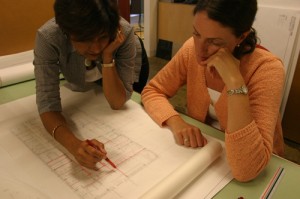
The American Institute of Architects recently unveiled an ambitious 2012 legislative agenda that has creating jobs in the hard-hit design and construction industry as its top priority.
“Architects are by and large small businesspeople: ninety-five percent of architecture firms in the United States employ 50 or fewer people,” said AIA President Jeff Potter, FAIA, himself a small business owner. “Meeting the challenges our communities face — lost jobs, outdated and unsafe infrastructure, abandoned buildings and neighborhoods, rising energy costs, and distressed main streets — demands a strong design and construction industry that is ready and able to get back to work.
“If enacted, this agenda would go a long way towards putting our sector back on its feet to do just that,” Potter said.
The AIA’s “Plan for Economic Growth” concentrates its efforts on solving the four key economic challenges facing the profession:
Removing Barriers to Private Sector Lending Thousands of needed construction projects that would employ millions of Americans are on hold because credit is still frozen. Banks, especially smaller community banks, want to lend but new federal regulations make it difficult. The AIA is doing its part to help make financing available with its Stalled Projects website, launched in 2011, to match building projects to investors. But Congress needs to do its part by passing legislation such as the Capital Access for Main Street Act, which would help prevent large numbers of commercial foreclosures and free up credit to help small business get back to work.
Saving Energy, Creating Jobs Across the country, building owners, state and local governments and school districts want to lower energy bills by retrofitting their buildings. AIA member firms are answering the call by signing up for the AIA 2030 Commitment to develop plans to ensure their projects and practices meet far-reaching green goals. Congress can spur tens of thousands of more jobs by increasing the value of the Federal Energy Efficient Commercial Building Tax Deduction by increasing it from the current $1.80sf to $3.00sf and by making changes that make the deduction easier to use by more people
Helping Small Firms Grow Small architecture firms and sole practitioners work in every community in the country to help homeowners and businesses design better buildings. But high taxes and burdensome paperwork hold them back. As Congress looks to reform the tax code and reduce the budget deficit, it needs to ensure that tax rates on small entrepreneurs are cut while preventing efforts to penalize smaller design firms.
Revitalizing America’s Neighborhoods Crumbling infrastructure, high unemployment and rising traffic congestion have hurt our nation’s communities, reducing safety and increasing pollution. Outdated federal transportation laws and tax policies have slowed projects down, deprived the public of a voice in the planning process, and forced Americans to spend more time in their cars. Congress needs to pass transportation reform legislation this year that gives people the ability to create and sustain prosperous communities with real choices in transportation options. The AIA also urges the administration to ensure that lending standards account for the kinds of mixed-use developments that communities need in order to bring back economic vitality and jobs.
For more information, or to get involved, visit AIA Issues & Advocacy.
